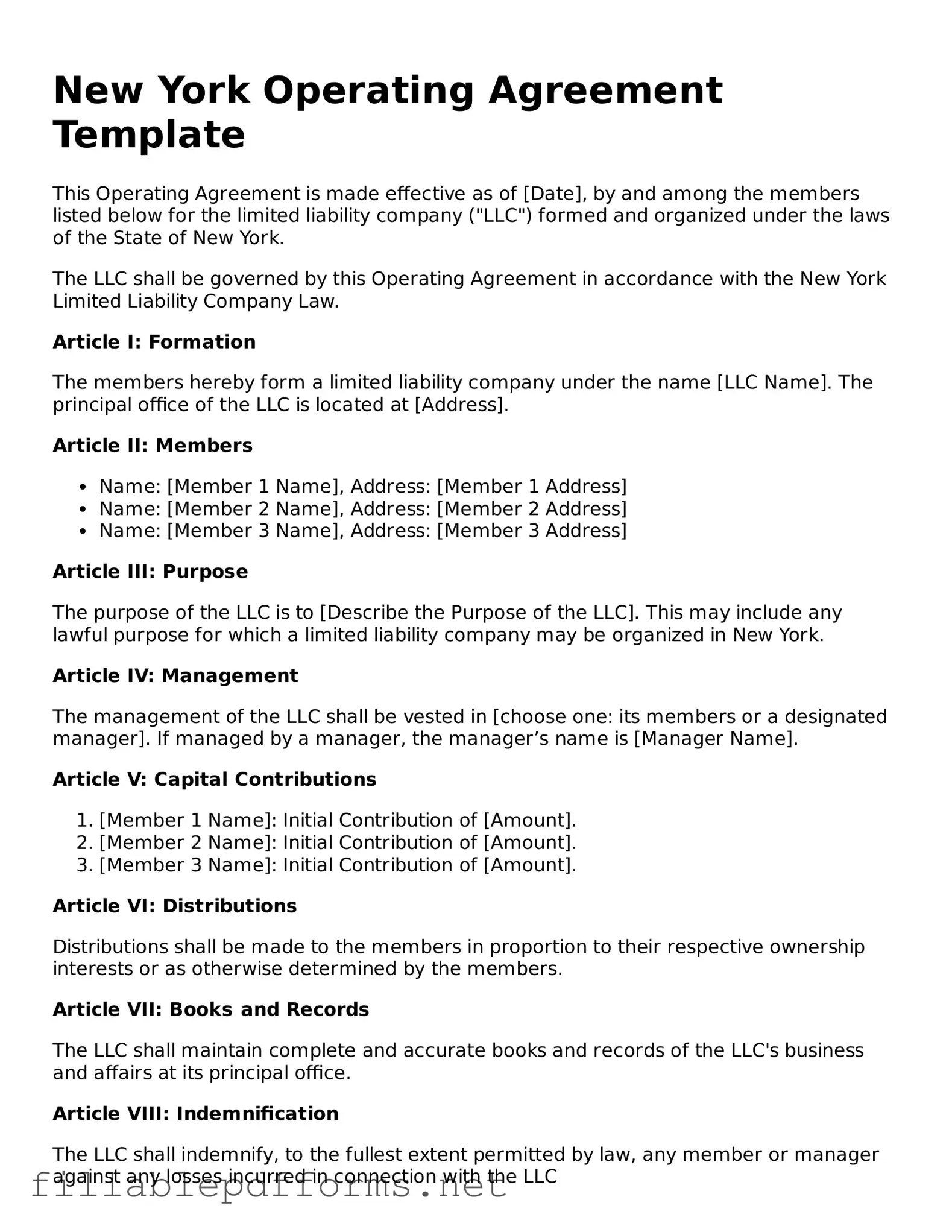When starting a business in New York, one crucial document that every limited liability company (LLC) should consider is the Operating Agreement form. This form serves as a foundational blueprint for how the company will be run, outlining the roles and responsibilities of its members, the management structure, and the procedures for making important decisions. It also addresses how profits and losses will be distributed among members, ensuring everyone is on the same page regarding financial matters. Additionally, the Operating Agreement includes provisions for adding new members, handling disputes, and outlining the process for dissolving the LLC if necessary. By having a well-drafted Operating Agreement, members can avoid misunderstandings and conflicts down the road, creating a smoother path for their business operations. Understanding the key elements of this form is essential for any entrepreneur looking to establish a solid framework for their LLC in New York.
